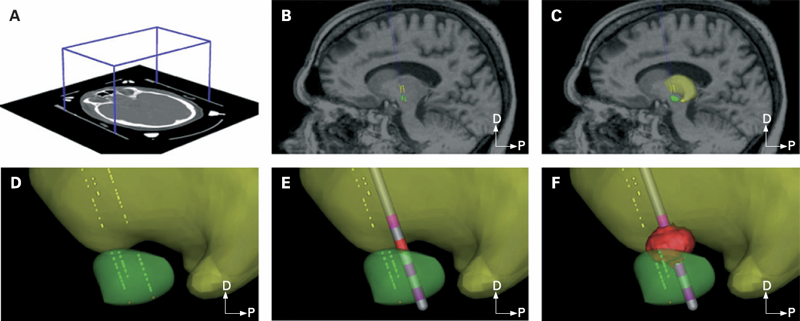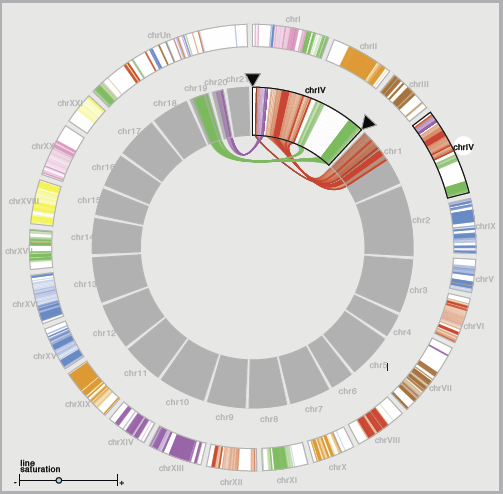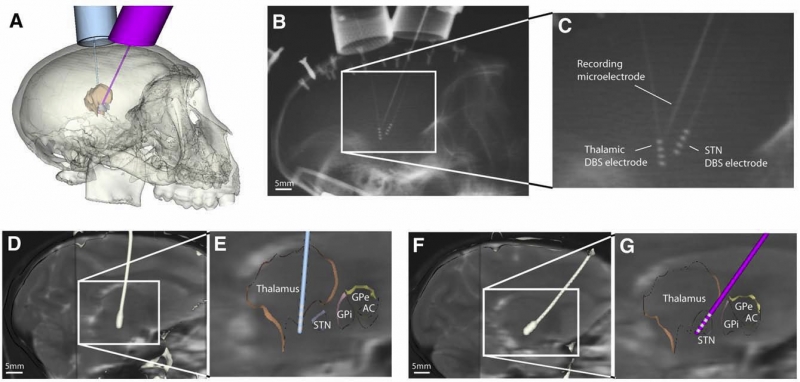SCI Publications
2009


J. Li, D. Xiu.
“A Generalized Polynomial Chaos Based Ensemble Kalman Filter with High Accuracy,” In Journal of Computational Physics, Vol. 228, No. 15, pp. 5454--5469. 2009.
DOI: 10.1016/j.jcp.2009.04.029
As one of the most adopted sequential data assimilation methods in many areas, especially those involving complex nonlinear dynamics, the ensemble Kalman filter (EnKF) has been under extensive investigation regarding its properties and efficiency. Compared to other variants of the Kalman filter (KF), EnKF is straightforward to implement, as it employs random ensembles to represent solution states. This, however, introduces sampling errors that affect the accuracy of EnKF in a negative manner. Though sampling errors can be easily reduced by using a large number of samples, in practice this is undesirable as each ensemble member is a solution of the system of state equations and can be time consuming to compute for large-scale problems. In this paper we present an efficient EnKF implementation via generalized polynomial chaos (gPC) expansion. The key ingredients of the proposed approach involve (1) solving the system of stochastic state equations via the gPC methodology to gain efficiency; and (2) sampling the gPC approximation of the stochastic solution with an arbitrarily large number of samples, at virtually no additional computational cost, to drastically reduce the sampling errors. The resulting algorithm thus achieves a high accuracy at reduced computational cost, compared to the classical implementations of EnKF. Numerical examples are provided to verify the convergence property and accuracy improvement of the new algorithm. We also prove that for linear systems with Gaussian noise, the first-order gPC Kalman filter method is equivalent to the exact Kalman filter.
Keywords: Kalman filter, Data assimilation, Polynomial chaos, Uncertainty quantification


Z. Liu, H. Zhu, B.L. Marks, L.M. Katz, C.B. Goodlett, G. Gerig, M. Styner.
“Voxel-wise group analysis of DTI,” In Proceedings of the IEEE International Symposium on Biomedical Imaging: From Nano to Macro, 2009, pp. 807--810. 2009.
DOI: 10.1109/ISBI.2009.5193172


J. Luitjens, M. Berzins.
“Uintah: A Scalable Adaptive Framework for Emerging Petascale Platforms,” SCI Technical Report, No. UUSCI-2009-002, SCI Institute, University of Utah, 2009.


S.A. Maas, B.J. Ellis, D.S. Rawlins, J.A. Weiss.
“A Comparison of FEBio, ABAQUS, and NIKE3D Results for a Suite of Verification Problems,” SCI Technical Report, No. UUSCI-2009-009, SCI Institute, University of Utah, 2009.


R.S. MacLeod, J.G. Stinstra, S. Lew, R.T. Whitaker, D.J. Swenson, M.J. Cole, J. Krüger, D.H. Brooks, C.R. Johnson.
“Subject-specific, multiscale simulation of electrophysiology: a software pipeline for image-based models and application examples,” In Philosophical Transactions of The Royal Society A, Mathematical, Physical & Engineering Sciences, Vol. 367, No. 1896, pp. 2293--2310. 2009.


C.B. Maks, C.R. Butson, B.L. Walter, J.L. Vitek, C.C. McIntyre.
“Deep brain stimulation activation volumes and their association with neurophysiological mapping and therapeutic outcomes,” In Journal of Neurology, Neurosurgery, and Psychiatry, Vol. 80, No. 6, pp. 659--666. June, 2009.
ISSN: 1468-330X
DOI: 10.1136/jnnp.2007.126219
OBJECTIVE: Despite the clinical success of deep brain stimulation (DBS) for the treatment of Parkinson's disease (PD), little is known about the electrical spread of the stimulation. The primary goal of this study was to integrate neuroimaging, neurophysiology and neurostimulation data sets from 10 patients with PD, unilaterally implanted with subthalamic nucleus (STN) DBS electrodes, to identify the theoretical volume of tissue activated (VTA) by clinically defined therapeutic stimulation parameters.
METHODS: Each patient specific model was created with a series of five steps: (1) definition of the neurosurgical stereotactic coordinate system within the context of preoperative imaging data; (2) entry of intraoperative microelectrode recording locations from neurophysiologically defined thalamic, subthalamic and substantia nigra neurons into the context of the imaging data; (3) fitting a three dimensional brain atlas to the neuroanatomy and neurophysiology of the patient; (4) positioning the DBS electrode in the documented stereotactic location, verified by postoperative imaging data; and (5) calculation of the VTA using a diffusion tensor based finite element neurostimulation model.
RESULTS: The patient specific models show that therapeutic benefit was achieved with direct stimulation of a wide range of anatomical structures in the subthalamic region. Interestingly, of the five patients exhibiting a greater than 40\% improvement in their Unified PD Rating Scale (UPDRS), all but one had the majority of their VTA outside the atlas defined borders of the STN. Furthermore, of the five patients with less than 40\% UPDRS improvement, all but one had the majority of their VTA inside the STN.
CONCLUSIONS: Our results are consistent with previous studies suggesting that therapeutic benefit is associated with electrode contacts near the dorsal border of the STN, and provide quantitative estimates of the electrical spread of the stimulation in a clinically relevant context.
Keywords: Brain Mapping, Brain Mapping: methods, Cerebral,Cerebral: physiology, Computer-Assisted, Computer-Assisted: methods, Deep Brain Stimulation, Deep Brain Stimulation: methods, Diffusion Magnetic Resonance Imaging, Diffusion Magnetic Resonance Imaging: methods, Dominance, Electrodes, Humans, Image Processing, Imaging, Implanted, Magnetic Resonance Imaging, Magnetic Resonance Imaging: methods, Nerve Net, Nerve Net: physiopathology, Neurologic Examination, Neurons, Neurons: physiology, Parkinson Disease, Parkinson Disease: physiopathology, Parkinson Disease: therapy, Substantia Nigra, Substantia Nigra: physiopathology, Subthalamic Nucleus, Subthalamic Nucleus: physiopathology, Synaptic Transmission, Synaptic Transmission: physiology, Thalamus, Thalamus: physiopathology, Three-Dimensional, Tomography, Treatment Outcome, X-Ray Computed, X-Ray Computed: methods


H.G. Martinez, S.I. Prajapati, C.A. Estrada, F. Jimenez, M.P. Quinones, I. Wu, A. Bahadur, A. Sanderson, C.R. Johnson, M. Shim, C. Keller, S.S. Ahuja.
“Microscopic Computed Tomography Based Virtual Histology for Visualization and Morphometry of Atherosclerosis in Diabetic Apolipoprotein E Mutant Mice,” In Circulation: Journal of the American Heart Association, Vol. 120, No. 9, pp. 821--822. 2009.


H. Martinez, S. Prajapati, C. Estrada, F. Jimenez, I. Wu, A. Bahadur, A. Sanderson, C.R. Johnson, M. Shim, C. Keller, S. Ahuja.
“Microscopic Computed Tomography–Based Virtual Histology for Visualization and Morphometry of Atherosclerosis in Diabetic Apolipoprotein E Mutant Mice,” In Circulation, Vol. 120, No. 821--822, 2009.


Y. Marzouk, D. Xiu.
“A Stochastic Collocation Approach to Bayesian Inference in Inverse Problems,” In Communications in Computational Physics, Vol. 6, No. 4, pp. 826--847. 2009.
DOI: 10.4208/cicp.2009.v6.p826
We present an efficient numerical strategy for the Bayesian solution of inverse problems. Stochastic collocation methods, based on generalized polynomial chaos (gPC), are used to construct a polynomial approximation of the forward solution over the support of the prior distribution. This approximation then defines a surrogate posterior probability density that can be evaluated repeatedly at minimal computational cost. The ability to simulate a large number of samples from the posterior distribution results in very accurate estimates of the inverse solution and its associated uncertainty. Combined with high accuracy of the gPC-based forward solver, the new algorithm can provide great efficiency in practical applications. A rigorous error analysis of the algorithm is conducted, where we establish convergence of the approximate posterior to the true posterior and obtain an estimate of the convergence rate. It is proved that fast (exponential) convergence of the gPC forward solution yields similarly fast (exponential) convergence of the posterior. The numerical strategy and the predicted convergence rates are then demonstrated on nonlinear inverse problems ofvarying smoothness and dimension.
Keywords: Inverse problems, Bayesian inference, stochastic collocation, generalized polynomial


M.D. Meyer, T. Munzner, H. Pfister.
“MizBee: A Multiscale Synteny Browser,” In IEEE Transactions on Visualization and Computer Graphics (Proceedings of InfoVis 2009), Vol. 15, No. 6, Note: Honorable Mention for Best Paper Award, pp. 897--904. 2009.
In the field of comparative genomics, scientists seek to answer questions about evolution and genomic function by comparing the genomes of species to find regions of shared sequences. Conserved syntenic blocks are an important biological data abstraction for indicating regions of shared sequences. The goal of this work is to show multiple types of relationships at multiple scales in a way that is visually comprehensible in accordance with known perceptual principles. We present a task analysis for this domain where the fundamental questions asked by biologists can be understood by a characterization of relationships into the four types of proximity/location, size, orientation, and similarity/strength, and the four scales of genome, chromosome, block, and genomic feature. We also propose a new taxonomy of the design space for visually encoding conservation data. We present MizBee, a multiscale synteny browser with the unique property of providing interactive side-by-side views of the data across the range of scales supporting exploration of all of these relationship types. We conclude with case studies from two biologists who used MizBee to augment their previous automatic analysis work flow, providing anecdotal evidence about the efficacy of the system for the visualization of syntenic data, the analysis of conservation relationships, and the communication of scientific insights.


M. Milanic, V. Jazbinsek, D.F. Wang, J. Sinstra, R.S. Macleod, D.H. Brooks, R. Hren.
“Evaluation of Approaches of Solving Electrocardiographic Imaging Problem,” In Proceeding of Computers in Cardiology 2010, Park City, Utah, September, 2009.


S. Miocinovic, S.F. Lempka, G.S. Russo, C.B. Maks, C.R. Butson, K.E. Sakaie, J.L. Vitek, C.C. McIntyre.
“Experimental and theoretical characterization of the voltage distribution generated by deep brain stimulation,” In Experimental Neurology, Vol. 216, No. 1, Elsevier Inc., pp. 166--176. March, 2009.
ISSN: 1090--2430
DOI: 10.1016/j.expneurol.2008.11.024
PubMed ID: 19118551
Deep brain stimulation (DBS) is an established therapy for the treatment of Parkinson's disease and shows great promise for numerous other disorders. While the fundamental purpose of DBS is to modulate neural activity with electric fields, little is known about the actual voltage distribution generated in the brain by DBS electrodes and as a result it is difficult to accurately predict which brain areas are directly affected by the stimulation. The goal of this study was to characterize the spatial and temporal characteristics of the voltage distribution generated by DBS electrodes. We experimentally recorded voltages around active DBS electrodes in either a saline bath or implanted in the brain of a non-human primate. Recordings were made during voltage-controlled and current-controlled stimulation. The experimental findings were compared to volume conductor electric field models of DBS parameterized to match the different experiments. Three factors directly affected the experimental and theoretical voltage measurements: 1) DBS electrode impedance, primarily dictated by a voltage drop at the electrode-electrolyte interface and the conductivity of the tissue medium, 2) capacitive modulation of the stimulus waveform, and 3) inhomogeneity and anisotropy of the tissue medium. While the voltage distribution does not directly predict the neural response to DBS, the results of this study do provide foundational building blocks for understanding the electrical parameters of DBS and characterizing its effects on the nervous system.


H. Mirzaee, C. Eskilsson, S.J. Sherwin, R.M. Kirby.
“Comparison of Consistent Integration Versus Adaptive Quadrature for Taming Aliasing Errors,” SCI Technical Report, No. UUSCI-2009-008, SCI Institute, University of Utah, 2009.


S.M. Moore, B.J. Ellis, J.A. Weiss, P.J. McMahon, R.E. Debski.
“The Glenohumeral Capsule Should be Evaluated as a Sheet of Fibrous Tissue: A Validated Finite Element Model,” In Annals of Biomedical Engineering, Vol. 38, No. 1, pp. 66--76. 2009.


M.W. Mosconi, H. Cody-Hazlett, M.D. Poe, G. Gerig, R. Gimpel-Smith, J. Piven.
“Longitudinal study of amygdala volume and joint attention in 2- to 4-year-old children with autism,” In Arch Gen Psychiatry, Vol. 66, No. 5, pp. 509--516. 2009.
PubMed ID: 19414710


N. Mukherjee, C. Kang, H.M. Wolfe, B.S. Hertzberg, J.K. Smith, W. Lin, G. Gerig, R.M. Hamer, J.H. Gilmore.
“Discordance of Prenatal and Neonatal Brain Development in Twins,” In Early Human Development, Vol. 85, No. 3, pp. 171--175. 2009.
PubMed ID: 18804925


H Müller, R Reihs, S Sauer, K Zatloukal, M Streit, A Lex, B Schlegl, D Schmalstieg.
“Connecting Genes with Diseases,” In Information Visualisation, 2009 13th International Conference, pp. 323--330. July, 2009.
DOI: 10.1109/IV.2009.86
This paper presents a visual data mining approach using the combination of clinical data, pathways and gene-expression data. The visual exploration of medical data using pathways to navigate and filter the data allows a more systematic and efficient investigation of problems in modern life science. A multiplicity of hypothesis can be evaluated in the same period of time, enabling a much better exploitation of the data. We present a system for data preprocessing and automatic classification, a set of visualization views and finally the integration in the Caleydo visualization framework, which enables the "coupling" of genetic and a broad spectrum of clinical data. With the help of the Caleydo framework the medical expert can identify connections between genetic parameters, patient subgroups, and drug responses.


R.S. Oakes, T.J. Badger, E.G. Kholmovski, N. Akoum, N.S. Burgon, E.N. Fish, J.J. Blauer, S.N. Rao, E.V. DiBella, N.M. Segerson, M. Daccarett, J. Windfelder, C.J. McGann, D.L. Parker, R.S. MacLeod, N.F. Marrouche.
“Detection and quantification of left atrial structural remodeling with delayed-enhancement magnetic resonance imaging in patients with atrial fibrillation,” In Circulation, Vol. 119, No. 13, pp. 1758--1767. 2009.


I. Oguz, M. Niethammer, J. Cates, R.T. Whitaker, P.T. Fletcher, C. Vachet, M. Styner.
“Cortical Correspondence with Probabilistic Fiber Connectivity,” In Information Processing in Medical Imaging (IPMI), Lecture Notes in Computer Science (LCNS), Vol. 5636, pp. 651--663. 2009.
DOI: 10.1007/978-3-642-02498-6_54



L. Omberg, J.R. Meyerson, K. Kobayashi, L.S. Drury, J.F.X. Diffley, O. Alter.
“Global Effects of DNA Replication and DNA Replication Origin Activity on Eukaryotic Gene Expression,” In Nature Molecular Systems Biology, Vol. 5, No. 312, pp. (published online). October, 2009.
DOI: 10.1038/msb.2009.70







